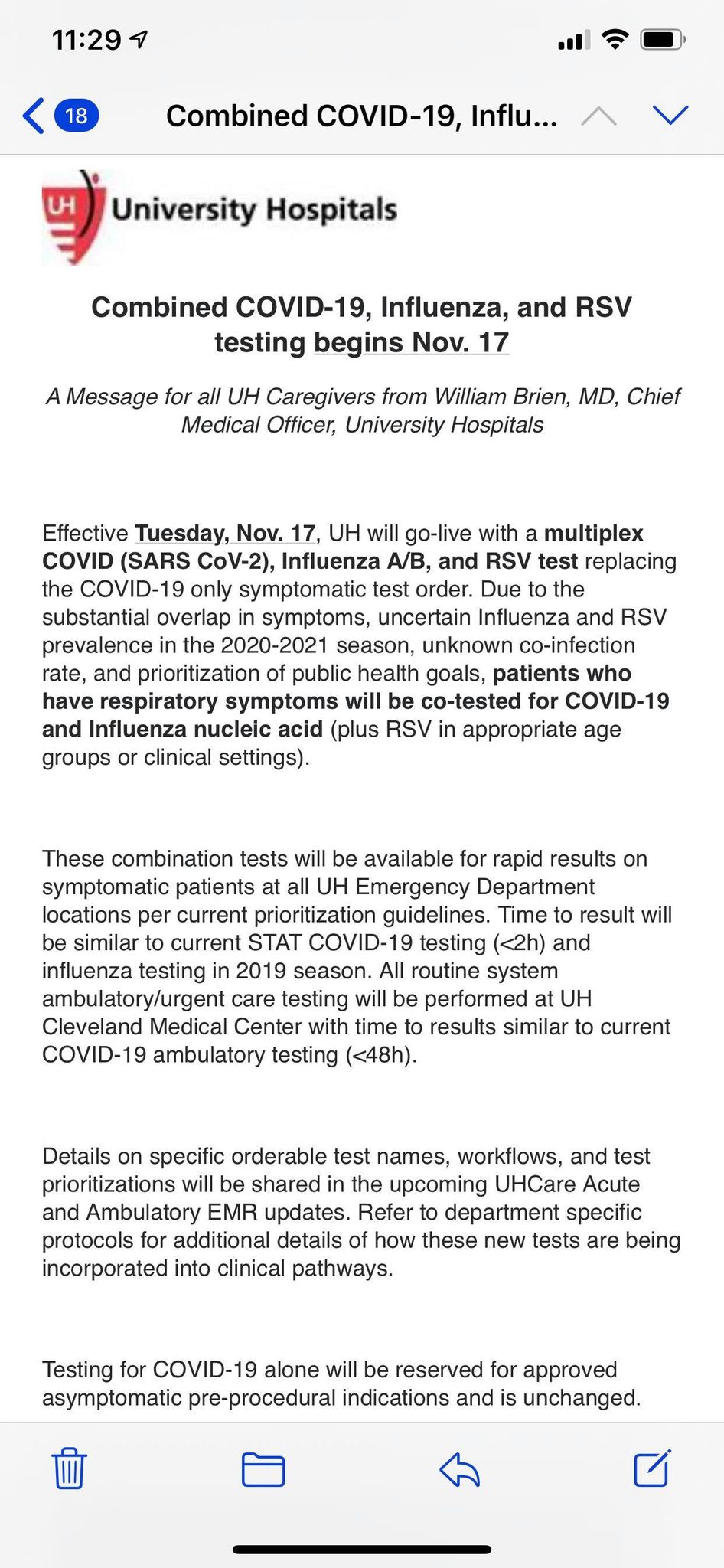COLUMBUS, Ohio – Ohio Governor Mike DeWine, leaders of the Ohio Hospital Association and Ohio’s incoming Medical Director Dr. Bruce Vanderhoff (formerly Chief Medical Officer at Ohio Health) conducted a 2:00 p.m. briefing.
The press conference was set to address the recent increase in hospitalizations and how the state plans to handle the matter.
“We are seeing in this state an unprecedented spike in hospital utilization,” said Dr. Vanderhoff.
The overarching message delivered by the medical director and zone leaders of each of Ohio’s hospital regions was if we don’t see a shift in the way cases are going we will have a staffing issue and COVID care could crowd-out care for others.
Ohio’s initial response that included a statewide shutdown and stoppage of elective surgeries resulted in closures and furloughs across Ohio’s healthcare industry.
According to the Ohio COVID website and records kept form the stie, total hospital capacity is higher today than it was on October 15.
Inpatient beds capacity:
October 15 – 71% (4.1% COVID)
November 8 – 61% (9% COVID)
ICU beds capacity:
October 15 – 66% (5 % COVID)
November 8 – 59% (12% COVID)
Ventilator capacity:
October 15 – 25% (2% COVID)
November 8 – 24% (5 % COVID)
Deaths in Ohio are flat and have been for months – they peaked on April 28. This despite a recent runup in positive tests that began in September and increases in COVID hospitalizations over about the same period.
Despite a higher capacity for care inside hospitals, it appears COVID occupancy is up in outpatient beds and ICU beds, while more ventilators are being used by people sick with COVID.
It is clear the COVID virus is a risk, and a serious one – particularly for the aged and those with existing conditions.
However, CDC Director Robert Redfield previously indicted hospitalizations may be inflated due to reimbursement issues.
How much financial pressure and liberal CDC guidelines have skewed Ohio hospitalizations may never be known.
But going forward it will get more difficult to understand if hospital beds, ICUs and ventilators are being used by COVID patients, at least in two of Ohio’s major health systems.
WMFD and The Ohio Star were contacted recently and received information that came from employees inside University Hospitals and Ohio Health – who expressed concern that new testing protocols would make it impossible to understand how many COVID-only patients are receiving care.

The information from both health systems deals with their updated testing protocol.
Ohio Health has 12 hospitals and 200 ambulatory sites in 47 counties, with a significant footprint in central Ohio.
The information obtained about the Ohio Health COVID testing protocol from an employee (who wishes to remain anonymous for safety and security) indicates there is a “new COVID/flu order set.”
The order set, the process by which tests are ordered, is driven by an algorithm that will provide an order outcome for “the test(s) that are clinically appropriate.”
The Ohio Health system is automated and instructs the health care worker entering the patient data to enter “no symptoms” as the answer to the question “symptoms as defined by the CDC?” – the algorithm-driven system defaults to an appropriate answer.
Whether the combined testing order process will count both COVID and other flu-like illnesses together has not yet been clarified. The Star reached out to an Ohio Health spokesperson and is awaiting comment.
The process of combining tests results for COVID and other illnesses does seem to be the case at University Hospitals – the hospital system has 11 regional centers throughout Northeast Ohio.
An email obtained by The Star from University Hospitals announces “Combined COVID-19, Influenza, and RSV testing begins November 17.” The message came from William Brien, Chief Medical Officer at University Hospitals. The email is below.
In it, Obrien says” “due to the substantial overlap in symptoms, uncertain influenza and RSV rate and prioritization of public health goals” that “[p]atients who have respiratory symptoms will be co-tested for COVID-19 and influenza nucleic acid.”
As we enter flu season and anticipate peaks in December and February, per the CDC, we must gain clarity on whether COVID, Influenza A/B and RSV data are going to be combined. And if so, it raises even more concern, as The Star has already reported on the Ohio Public Health Advisory System and how it may be depicting inflated results due to how COVID hospitalizations and emergency department visits for COVID-like illnesses are recorded.
The Star reached out to spokespersons for both hospital system but had not received a return call or message before this story published.
Watch the presser:
_ _ _
Jack Windsor is Managing Editor at both The Ohio Star and The Michigan Star. Windsor is also an Investigative Reporter at WMFD-TV and The Virginia Star. Follow Jack on Twitter. Email tips to [email protected].
Image “Governor DeWine” by The Ohio Channel.





